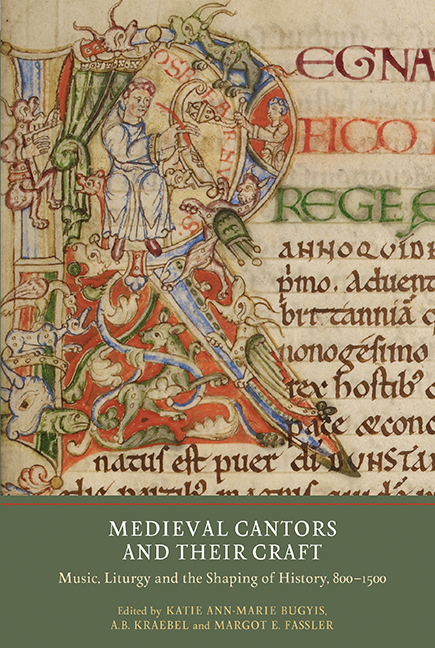Book contents
- Frontmatter
- Dedication
- Contents
- List of Illustrations
- Contributors
- Acknowledgments
- Abbreviations
- Miscellaneous Frontmatter
- Introduction
- PART I The Carolingian Period
- PART II The Eleventh Century
- PART III England in the Twelfth Century
- 9 Cantor, Sacrist or Prior? The Provision of Books in Anglo-Norman England
- 10 Symeon of Durham as Cantor and Historian at Durham Cathedral Priory, c. 1090–1129
- 11 Reshaping History in the Cult of Æbbe of Coldingham
- 12 William of Malmesbury as a Cantor-Historian
- 13 Lex orandi, lex scribendi? The Role of Historiography in the Liturgical Life of William of Malmesbury
- 14 Of the Making of Little Books: The Minor Works of William of Newburgh
- PART IV On the Continent: Five Case Studies
- Index of Manuscripts
- General Index
- Miscellaneous Endmatter
11 - Reshaping History in the Cult of Æbbe of Coldingham
from PART III - England in the Twelfth Century
Published online by Cambridge University Press: 25 October 2017
- Frontmatter
- Dedication
- Contents
- List of Illustrations
- Contributors
- Acknowledgments
- Abbreviations
- Miscellaneous Frontmatter
- Introduction
- PART I The Carolingian Period
- PART II The Eleventh Century
- PART III England in the Twelfth Century
- 9 Cantor, Sacrist or Prior? The Provision of Books in Anglo-Norman England
- 10 Symeon of Durham as Cantor and Historian at Durham Cathedral Priory, c. 1090–1129
- 11 Reshaping History in the Cult of Æbbe of Coldingham
- 12 William of Malmesbury as a Cantor-Historian
- 13 Lex orandi, lex scribendi? The Role of Historiography in the Liturgical Life of William of Malmesbury
- 14 Of the Making of Little Books: The Minor Works of William of Newburgh
- PART IV On the Continent: Five Case Studies
- Index of Manuscripts
- General Index
- Miscellaneous Endmatter
Summary
In the early 680s a member of the monastic community at Coldingham named Adomnan had a vision. Because ‘the cells that were built for praying and for reading have become haunts of feasting, drinking, gossip and other delights’, God's judgment would fall upon the double monastery and it would be destroyed. Coldingham's abbess, Abbe, would be spared from these dire consequences, and she was assured that the destruction of the monastery would happen after her death. Events transpired as Adomnan had predicted; shortly after Abbe's death, the monastery burnt to the ground. When he recounted the incident in his Historia ecclesiastica, Bede observed darkly that, although the fire seemed like an accident, ‘tamen a malitia inhabitantium in eo, et praecipue illorum qui maiores esse videbantur, contigisse omnes qui novere facillime potuerunt advertere’ (‘all who knew the truth were easily able to judge that it happened because of the wickedness of those who dwelt there and especially of those who were supposed to be its leaders’).
This is hardly an endorsement of the holiness of the monastery's abbess. Yet in the twelfth century, Abbe was the focus of a significant cult. Women and men, young and old, trekked up the steep paths along the North Sea, north of the river Tweed, and spent Saturday nights in prayer at an oratory on the site of her monastery, waiting for visions and healing through their devotion to the saint. Abbe often responded to their veneration, loosing knots in tongues tied by the devil, opening clenched and crippled hands, and miraculously removing a goose bone from the throat of a choking man. In response, cripples left their crutches on the site ‘as a memorial of this great miracle’. The saint's reputation spread; at the end of the twelfth century, a local monk at Coldingham priory, a dependency of Durham, observed that ‘crowds throng here from nearby and from distant regions’ for miraculous cures. So how did an abbess with no particular reputation for holiness in the seventh and eight centuries – indeed, quite the opposite – become a popular saint in the twelfth century? How did worshippers and writers reshape history for the purposes of forming and promoting this cult?
- Type
- Chapter
- Information
- Medieval Cantors and their CraftMusic, Liturgy and the Shaping of History, 800-1500, pp. 207 - 221Publisher: Boydell & BrewerPrint publication year: 2017



